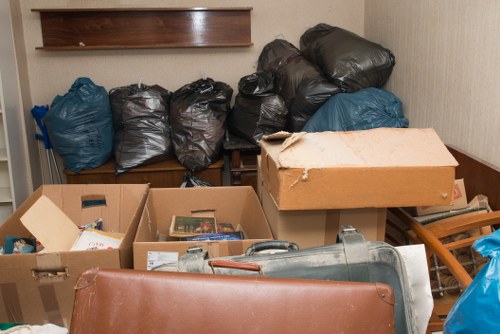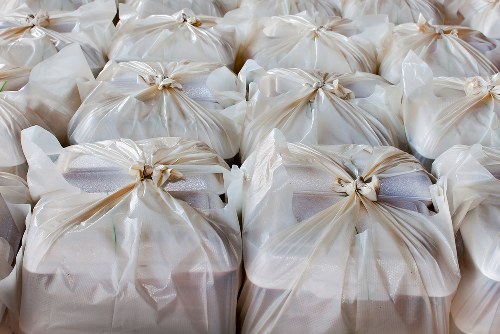Efficient Construction Waste Clearance in Richmond upon Thames

Renovating or constructing a property in Richmond upon Thames can significantly enhance its value and aesthetic appeal. However, these projects inevitably generate a considerable amount of construction waste, which needs to be managed responsibly. Proper **construction waste clearance** not only ensures compliance with local regulations but also promotes environmental sustainability.
Richmond upon Thames, known for its charming neighborhoods and historical sites, requires effective waste management solutions to maintain its pristine environment. Whether you’re undertaking a small home renovation or a large-scale construction project, understanding the nuances of construction waste clearance in this area is crucial.
In this comprehensive guide, we will explore the various aspects of construction waste clearance in Richmond upon Thames, including the types of waste commonly generated, the legal obligations, and the best practices for efficient waste management.

The Importance of Construction Waste Clearance
Effective construction waste clearance plays a vital role in maintaining the cleanliness and safety of construction sites. It helps in:
- Reducing environmental impact by minimizing landfill usage.
- Ensuring compliance with local regulations and avoiding potential fines.
- Enhancing the overall efficiency of the construction project.
Moreover, responsible waste management contributes to the sustainability goals of the community, promoting recycling and the reuse of materials wherever possible.
In Richmond upon Thames, where environmental conservation is highly valued, adhering to proper waste clearance protocols is not just a legal obligation but also a civic responsibility.

Types of Construction Waste
Construction projects generate various types of waste, each requiring specific handling and disposal methods. The primary categories include:
- Concrete and Masonry: These materials are heavy and require specialized recycling processes.
- Wood and Timber: Often recyclable, wooden waste can be repurposed for other construction uses.
- Metals: Metals such as steel and aluminum can be melted down and recycled.
- Plastics: Various plastic materials used in construction can be recycled or repurposed.
- Demolition Waste: Includes bricks, tiles, and other debris resulting from the dismantling of structures.
Understanding the composition of your construction waste is essential for effective clearance and recycling.

Legal Requirements for Waste Clearance
In Richmond upon Thames, handling construction waste is governed by specific regulations to ensure environmental protection and public safety. Key legal requirements include:
- Waste Management Licenses: Contractors may need to obtain licenses depending on the volume and type of waste.
- Proper Segregation: Waste must be sorted into appropriate categories for recycling and disposal.
- Timely Removal: Construction sites are required to have timely waste removal schedules to prevent accumulation.
- Use of Licensed Carriers: Transporting waste must be done using carriers authorized to handle construction waste.
Non-compliance with these regulations can result in hefty fines and project delays, making it imperative to work with knowledgeable waste clearance services.
Engaging with professionals who are well-versed in local regulations can help ensure that your construction waste clearance process adheres to all legal requirements.

Best Practices for Construction Waste Clearance
Implementing best practices in construction waste clearance can lead to more efficient project management and cost savings. Here are some strategies to consider:
- Waste Audits: Conduct regular audits to identify the types and quantities of waste generated.
- Segregation at Source: Separate different types of waste during the construction process to facilitate recycling.
- Recycling and Reuse: Maximize the recycling and reuse of materials to reduce the overall waste sent to landfills.
- Partner with Reliable Clearance Services: Collaborate with professional waste clearance providers who offer comprehensive services tailored to your project needs.
- Educate Your Team: Ensure that all team members are aware of waste management protocols and their roles in maintaining compliance.
By adopting these practices, construction projects in Richmond upon Thames can achieve better sustainability outcomes and operational efficiencies.
Moreover, fostering a culture of responsible waste management can enhance the reputation of your construction business and contribute positively to the community.

Choosing the Right Waste Clearance Service
Selecting a reputable construction waste clearance service is critical for the smooth execution of your project. Consider the following factors when making your choice:
- Experience and Expertise: Look for companies with a proven track record in handling construction waste.
- Compliance with Regulations: Ensure that the service provider adheres to all local waste management laws.
- Range of Services: Opt for services that offer comprehensive clearance, including pickup, transportation, and recycling.
- Customer Reviews: Check testimonials and reviews to gauge the reliability and quality of service.
- Competitive Pricing: Compare quotes from different providers to find a service that fits your budget without compromising on quality.
Investing in a dependable waste clearance partner can save you time, reduce stress, and ensure that your project remains on schedule.
Additionally, a professional service provider can offer valuable insights into optimizing your waste management practices for future projects.

Environmental Benefits of Proper Waste Clearance
Properly managing construction waste has significant environmental benefits, including:
- Reducing Landfill Usage: Recycling materials lessens the burden on landfills and conserves space for future needs.
- Conserving Natural Resources: Reusing materials reduces the need for new resources, fostering sustainability.
- Lowering Carbon Footprint: Efficient waste management practices can decrease greenhouse gas emissions associated with waste processing.
- Protecting Local Ecosystems: Proper disposal prevents harmful substances from entering the environment and affecting local flora and fauna.
In Richmond upon Thames, where environmental stewardship is a priority, adopting responsible waste clearance practices aligns with broader sustainability goals.
Moreover, showcasing your commitment to environmental protection can enhance your company’s reputation and appeal to eco-conscious clients.

Cost-Effective Waste Clearance Solutions
Managing construction waste doesn’t have to be prohibitively expensive. Here are some cost-effective strategies:
- Minimize Waste Generation: Plan your project meticulously to reduce the amount of waste produced.
- Maximize Recycling: Increase recycling rates to lower disposal costs.
- Bulk Disposal Discounts: Negotiate bulk disposal rates with service providers to benefit from lower prices.
- Invest in Reusable Materials: Use materials that can be reused or repurposed in future projects.
- Schedule Regular Pickups: Regular waste clearance can prevent accumulation and avoid additional fees for excess waste.
Implementing these strategies can lead to substantial savings while maintaining efficient waste management operations.
Additionally, proactive waste reduction can streamline your project timeline, avoiding delays associated with waste clearance issues.

Technology in Construction Waste Management
Advancements in technology have revolutionized construction waste management. Innovative solutions include:
- Waste Tracking Software: Monitor waste generation and disposal in real-time.
- Automated Sorting Systems: Enhance the accuracy and efficiency of waste segregation.
- Recycling Technologies: Improve the quality and variety of materials that can be recycled.
- Green Building Materials: Use materials designed for sustainability and ease of recycling.
- Mobile Apps: Facilitate communication and coordination between construction teams and waste clearance services.
Integrating these technologies can optimize your waste management processes, leading to better outcomes and reduced operational costs.
Staying abreast of technological trends ensures that your construction practices remain efficient and environmentally responsible.

Community Impact of Construction Waste Clearance
Effective construction waste clearance has a positive impact on the local community by:
- Improving Public Health: Proper waste management reduces the risk of pollution and related health issues.
- Enhancing Aesthetics: Clean construction sites contribute to the visual appeal of the area.
- Creating Jobs: Waste management services provide employment opportunities within the community.
- Promoting Sustainability: Encourages community-wide initiatives towards environmental conservation.
- Fostering Positive Relationships: Demonstrates corporate social responsibility, building trust with local residents.
In Richmond upon Thames, where community well-being is paramount, responsible waste clearance supports the overall quality of life and environmental health.
Engaging with local stakeholders and maintaining transparent waste management practices can further strengthen community ties.

Future Trends in Construction Waste Clearance
The landscape of construction waste management is evolving, with future trends pointing towards greater sustainability and efficiency:
- Circular Economy: Emphasizing the reuse and recycling of materials to create a closed-loop system.
- Smart Waste Solutions: Utilizing IoT and AI to optimize waste collection and processing.
- Eco-Friendly Materials: Development and use of materials that are easier to recycle and have lower environmental impacts.
- Regulatory Enhancements: Stricter regulations and incentives for sustainable waste management practices.
- Collaborative Platforms: Facilitating better coordination between construction firms and waste clearance services.
Staying informed about these trends can help construction projects in Richmond upon Thames remain competitive and environmentally responsible.
Adapting to these changes proactively can position your business as a leader in sustainable construction practices.

How to Get Started with Construction Waste Clearance
Initiating a construction waste clearance plan involves several steps:
- Assess Your Waste: Identify the types and quantities of waste your project will generate.
- Develop a Clearance Strategy: Create a plan outlining how waste will be managed, including sorting, recycling, and disposal.
- Choose a Service Provider: Select a reliable construction waste clearance service that meets your project’s needs.
- Implement Waste Management Practices: Train your team on proper waste handling and segregation techniques.
- Monitor and Adjust: Regularly review your waste clearance process and make adjustments as necessary to improve efficiency.
Starting with a clear plan ensures that your construction waste clearance efforts are organized and effective from the outset.
Proper planning also helps in anticipating potential challenges and addressing them proactively, minimizing disruptions to your project timeline.

Common Challenges in Construction Waste Clearance
Managing construction waste can present several challenges, including:
- Volume Management: Large projects generate significant amounts of waste, requiring efficient clearance systems.
- Compliance: Keeping up with changing regulations can be difficult, especially for smaller contractors.
- Separation and Sorting: Effective segregation of waste types is essential but can be time-consuming.
- Cost Constraints: Balancing effective waste management with budget limitations is often challenging.
- Logistical Issues: Coordinating the transportation and disposal of waste can complicate project logistics.
Being aware of these challenges allows you to implement strategies to mitigate them effectively.
For instance, investing in training and efficient sorting systems can address segregation issues, while partnering with experienced clearance services can help manage volume and logistical complexities.

Case Studies: Successful Waste Clearance Projects
Examining successful construction waste clearance projects in Richmond upon Thames can provide valuable insights:
Project A: Residential Renovation
A home renovation project utilized a local waste clearance service that implemented a detailed sorting system. This approach maximized recycling rates and minimized landfill waste, adhering strictly to local regulations.
Project B: Commercial Construction
A commercial building project partnered with a waste management company that provided regular pickups and efficient disposal methods. This collaboration ensured that waste clearance did not hinder project timelines and maintained a clean worksite.
Project C: Eco-Friendly Development
An eco-friendly development incorporated sustainable waste management practices from the outset, utilizing recycled materials and achieving high recycling rates through meticulous waste segregation.
These case studies highlight the importance of planning, collaboration, and adherence to best practices in achieving successful construction waste clearance.

Tips for Minimizing Construction Waste
Reducing the amount of waste generated during construction is beneficial for both the environment and your budget. Here are some tips to achieve this:
- Precise Planning: Carefully plan your project to minimize material excess and waste.
- Accurate Measurements: Ensure precise measurements when ordering materials to avoid surplus.
- Efficient Design: Design structures that optimize material usage and reduce waste.
- Reusing Materials: Identify opportunities to reuse materials within the project or for future projects.
- Regular Monitoring: Keep track of waste generation and implement corrective measures as needed.
Implementing these strategies can lead to significant reductions in construction waste, promoting sustainability and cost savings.
Moreover, fostering a culture of waste reduction within your team can lead to continuous improvements in your construction practices.

Conclusion
Construction waste clearance in Richmond upon Thames is a critical component of any construction or renovation project. By understanding the types of waste, adhering to legal requirements, and implementing best practices, you can ensure that your project is both efficient and environmentally responsible.
Partnering with experienced waste clearance services, leveraging technology, and committing to sustainable practices will not only benefit your project but also contribute positively to the Richmond upon Thames community.
Contact us today to learn how we can assist you with your construction waste clearance needs and help you achieve your sustainability goals.